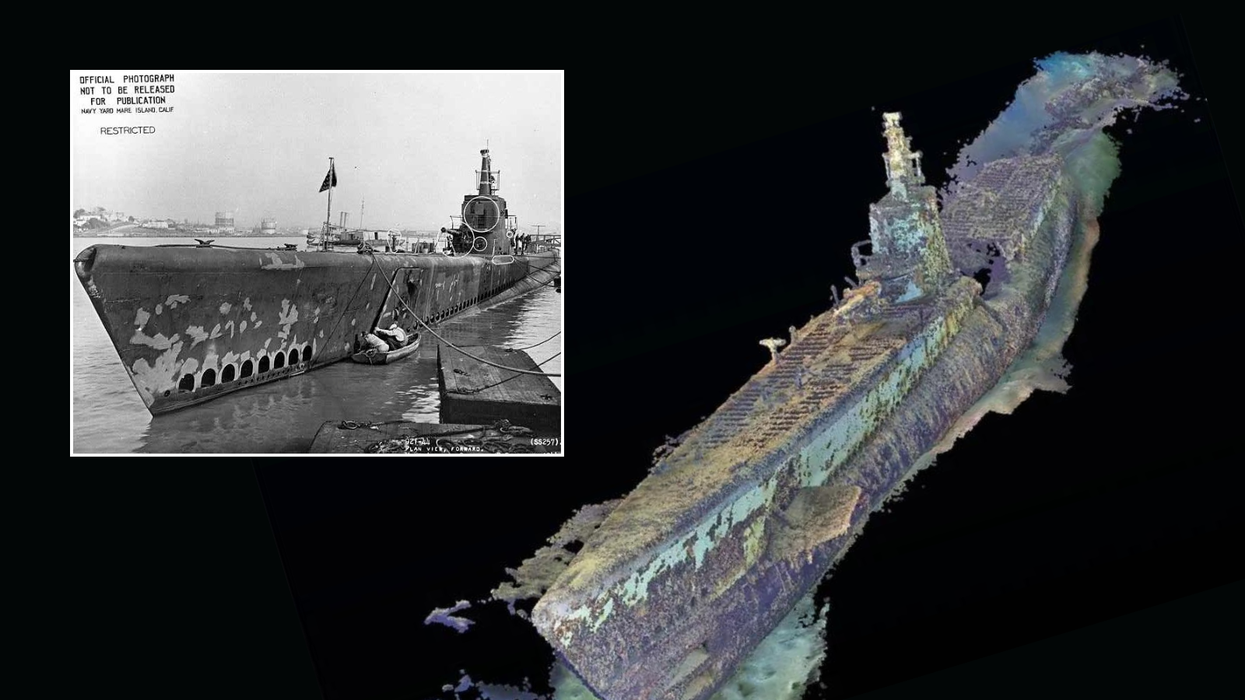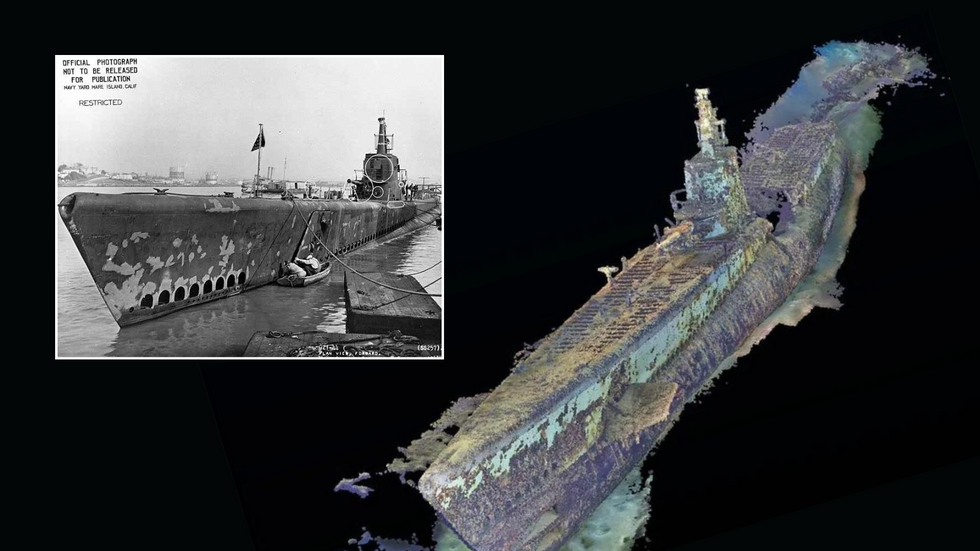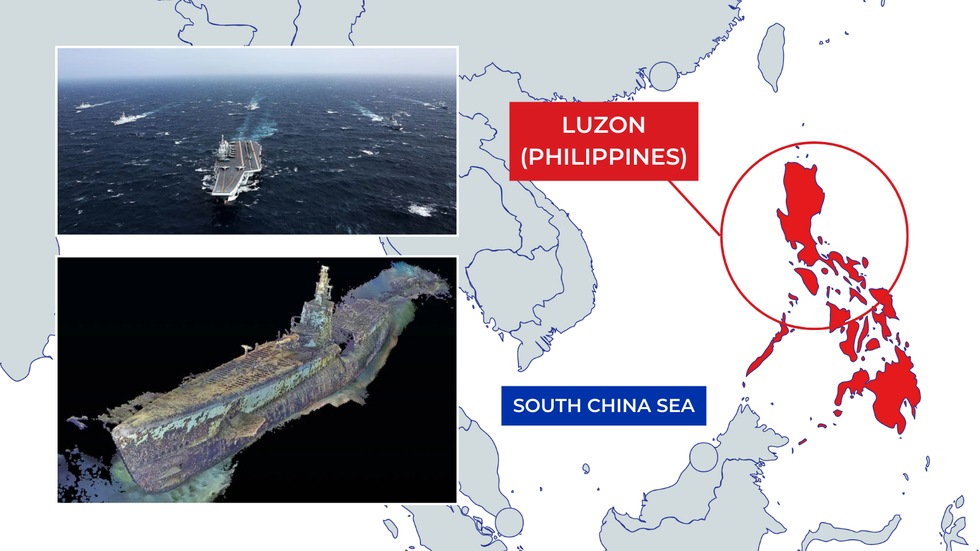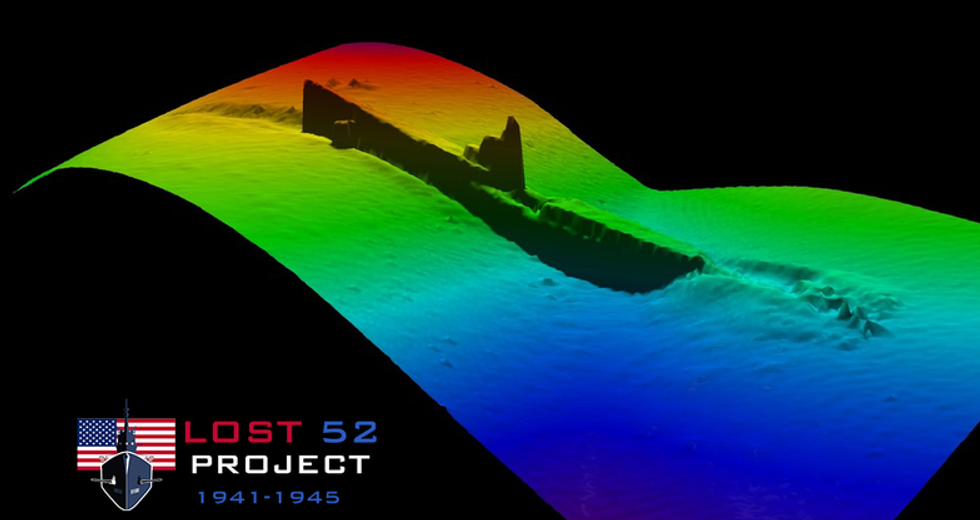Lost WW2 submarine sunk 80 years ago finally discovered 3,000ft beneath ocean

The USS Harder, seen during its service and now - through 3D scans on the seabed
|US Navy/Wikimedia Commons

'Harder was lost in the course of victory, and victory has a price, as does freedom - and we must not forget,' said US Naval history chief Samuel Cox
Don't Miss
Most Read
A Second World War-era US Navy submarine has been found almost 80 years after its sinking at the hands of Japanese forces, researchers have announced.
The wreck of the USS Harder, a nearly 100-metre-long sub, was found off the Philippines' northern island of Luzon using data from Tim Taylor, an ocean explorer and founder of the Lost 52 Project, a mission to research the 52 US Navy submarines lost in World War Two.
The Harder had been sunk by a depth charge attack in August 1944 while fighting Japanese ships in Dasol Bay in the Philippines - which claimed the lives of all 79 crewmen on board.
American forces had formally declared the sub lost in January 1945, but now, the US Naval History and Heritage Command (NHHC) has confirmed the vessel's final resting place.

The USS Harder, seen during its service and now - through 3D scans on the seabed
|US Navy/Wikimedia Commons
The NHHC the submarine was "resting at a depth of more than 3,000 feet", adding that it "sits upright on her keel relatively intact except for the depth-charge damage aft of the conning tower".
It praised the Project for its findings, saying: "Submarines by their very design can be a challenge to identify, but the excellent state of preservation of the site and the quality of the data collected by Lost 52 allowed for NHHC to confirm the identity of the wreck as Harder."
Its director, Samuel Cox, said: "Harder was lost in the course of victory, and victory has a price, as does freedom - and we must not forget.
"We are grateful that Tim Taylor and his Lost 52 team have given us the opportunity to once again honor the valor of the crew of 'Hit 'em HARDER', the submarine that sank the most Japanese warships in particularly audacious attacks under her legendary skipper, Commander Sam Dealey."
MORE LIKE THIS:

The submarine was found off the coast of the Filipino island of Luzon in the South China Sea - an area which has long been a focus of US Navy attention
|Getty/US Navy/GB News
The Lost 52 Project said that the US Navy had officially verified its findings, confirming the sub now sat 1140 metres under the surface of the South China Sea.
A statement by the Project read: "This is a very personal and historic find for Taylor; it marks his ninth WWII submarine discovery.
"He holds the distinction of being the only ocean explorer and civilian to locate, document and share his historic findings with the US Navy and bring closure to families of 452 servicemen and heroes lost in battle."
The Harder is one of a number of American wrecks in the waters around the Philippines; the former US colony was a key battleground in the Second World War as American forces battled to reclaim it from Japanese Imperial control.

The Lost 52 Project released 3D scans of the seafloor revealing the wreck's final resting place
|Lost 52 Project
Nowadays, the US Navy maintains a heavy presence in the South China Sea; the US State Department says its mission focuses on "preserving peace, upholding freedom of the seas in line with international law, maintaining the unimpeded flow of lawful commerce, and supporting peaceful settlement of disputes".
American influence in the region centres around supporting partners and allies including Taiwan and the Philippines against Chinese threats.
Just weeks ago, tensions soared between the Philippines and China over the latter's contentious claim to the Filipino-occupied Second Thomas Shoal - a submerged reef which, if claimed by China, would hand it greater territorial control over the waters to its south-east.
Chinese activity in the region has attracted heavy scorn from American analysts; last week, James Fanell and Bradley Thayer slammed China's "long, persistent belligerency" and harassment against the Philippines.








